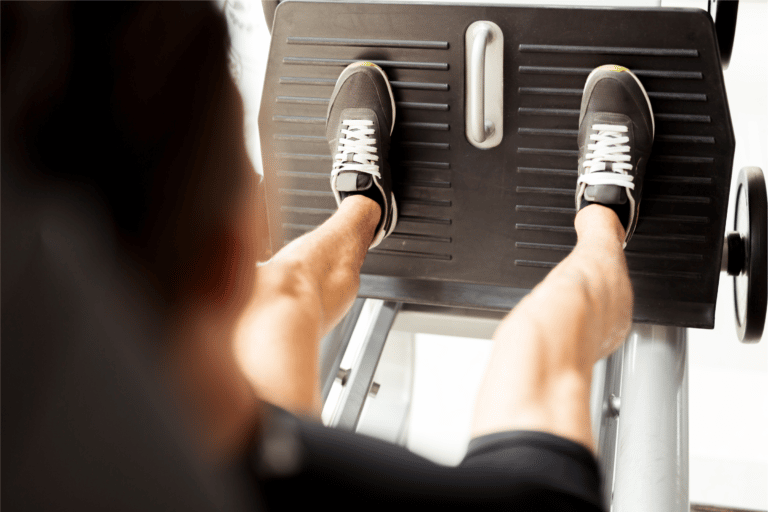Quick Warm-Up for Morning Run: Dynamic Stretches for an Energized Start
Embarking on a morning run can significantly boost your day, setting a positive and healthy tone. To maximize the benefits and reduce the risk of injury, a proper warm-up is essential.
This non-negotiable component of your routine not only prepares your muscles and joints for the physical activity but also signals your body to transition from a state of rest to a higher energy output. The key lies in a brief, dynamic routine that activates your entire body without eating too much into your valuable time.
Your warm-up should be as much a part of your morning ritual as your first sip of coffee. It’s a moment to mentally gear up for the distance ahead while physically priming your self for peak performance.
Embracing this practice can enhance your running efficiency and, over time, contribute to overall improvements in your health and fitness levels. The right warm-up routine is simple, quick, and tailored to awaken your muscles, boost your heart rate, and set the stage for a run that feels as good as the health benefits it’s bound to deliver.
Quick Warm-Up Routine for a Morning Run
Before stepping out for a morning run, a quick warm-up can enhance performance and prevent injuries. This warm-up will focus on dynamic movements geared toward activating your body’s key muscle groups.
Importance of Dynamic Movements
Dynamic exercises increase your range of motion and prepare your muscles for the activity ahead. These exercises mimic running movements, enhancing both balance and mobility. A dynamic warm-up should feel energizing, not exhausting, and set the stage for an effective run.
Step-by-Step Dynamic Warm-Up Routine:
- Begin with high knees for 30 seconds to engage your core and elevate your heart rate.
- Follow with leg swings, 15 per leg, to loosen hips and hamstrings.
- Perform 10 walking lunges on each leg to activate quads and glutes.
- Conclude with 30 seconds of butt kicks to prepare your hamstrings for the run.
Targeting Key Muscle Groups
Focusing on hips, glutes, quads, hamstrings, ankles, and the core, a targeted warm-up routine ensures these critical areas are ready for the demands of running.
- Hips and Glutes: Perform side leg raises to encourage hip mobility.
- Quads and Hamstrings: Do front leg swings to stretch and warm up the front and back of your thighs.
- Ankles and Core: Balance exercises, like standing on one foot, help stabilize your ankles and strengthen the core, essential for a steady run.
Warm-Up Variations and Consistency
Variety in your warm-up routine can prevent monotony and ensure all muscle groups are addressed. Adjusting exercises to your body’s needs on a given day is beneficial. Regardless of variations, it’s essential to make warm-up exercises a consistent habit for optimal running performance.
- Consistency Tip: Set a routine warm-up sequence and time, making it a non-negotiable part of your morning ritual.
- Adjust When Necessary: If certain muscles feel tighter, add specific stretches or movements to address those areas.
By incorporating these dynamic warm-up practices, your body will be better primed for the demands of a morning run, potentially improving your overall running experience.
Morning Preparations
Starting your day with a morning run sets a vigorous tone for the rest of your daily activities. To ensure an effective and enjoyable early morning run, focus on optimizing your nighttime and morning routines, preparing a nutritious breakfast, and selecting the right gear.
Optimizing Sleep and Wake-up Routine
To boost your performance as a morning runner, you must prioritize consistent and restful sleep. Set a quiet, comfortable environment and aim for 7-9 hours of quality rest, as recommended by healthcare professionals. Here’s how to fine-tune your sleep routine:
- Bedtime: Establish a consistent bedtime that allows full sleep cycles.
- Alarm Clock: Place your alarm clock across the room to discourage the snooze button.
| Sleep Tips | Action Steps |
|---|---|
| Consistent Sleep Cycle | Aim for the same bedtime each night. |
| Avoid Electronics | Keep screens off at least 30 minutes before bed. |
| Evening Relaxation | Read or meditate to quiet the mind. |
| Pre-run Preparation | Set out your running clothes and shoes the night before. |
Breakfast and Nutrition
A balanced breakfast fuels your body for an early run. Work with a fitness nutrition specialist to tailor your pre-run meal to your body’s needs. The key components include:
- Carbohydrates: Consume easily digestible carbs like bananas or whole-grain toast.
- Hydration: Drink water upon waking to rehydrate after sleep.
| Nutrition Quick Guide | Food Suggestions |
|---|---|
| Carbohydrates | Bananas, oatmeal, whole-grain toast |
| Protein | Greek yogurt, nuts, hard-boiled eggs |
| Hydration | Water, herbal tea |
Appropriate Gear Selection
A personal trainer would advise that the right gear is fundamental to a successful run, especially for running in the morning. Here are specifics:
- Running Shoes: Wear well-cushioned shoes specific to your gait.
- Running Clothes: Choose moisture-wicking fabrics and reflective gear for visibility in low-light conditions.
| Gear Essentials | Selection Criteria |
|---|---|
| Shoes | Supportive, gait-appropriate, comfortable. |
| Clothing | Weather-appropriate, reflective, comfortable. |
Benefits of a Proper Warm-Up

Before you hit the pavement for your morning jog, a proper warm-up is essential to prepare your body. It enhances your running performance and reduces the risk of injury.
Enhancing Performance and Flexibility
Effective warm-up exercises increase your heart rate and blood flow to your muscles, reducing the likelihood of strain. It’s beneficial for improving flexibility in joints such as your knees and hips, making your run smoother. Consider incorporating dynamic stretches or bodyweight movements, such as lunges and leg swings, for 5 to 10 minutes to reap these benefits.
- Benefits for Performance:
- Prepares your cardiovascular system for the upcoming activity
- Enhances muscle elasticity, leading to better range and economy of motion
- Improvement in Flexibility:
- Loosens joints, increasing the range of motion
- Decreases muscle stiffness, making running feel less strenuous
Injury Prevention Strategies
A thorough warm-up can help prevent common running injuries by preparing your body for exercise-induced stress. It slowly raises your body’s temperature and readies your muscles for the impact of running. This gradual process helps minimize the risk of delayed onset muscle soreness (DOMS) and mitigates the build-up of lactic acid during your workout.
- Steps to Prevent Injury:
- Begin with a light jog or brisk walking to increase core temperature.
- Follow with dynamic stretches focusing on the lower body.
- Key Points:
- Warm-up: Activates neuromuscular pathways related to your running form.
- Cool down: Helps in dissipating lactic acid and aids in recovery post-run.
Post-Run Cool Down and Recovery
After a run, your body needs time to return to its normal state. A focused cool down can assist in reducing muscle soreness and aid in recovery.
Cool Down Techniques
Reduce Heart Rate: Gradually decrease your pace before stopping. Walk for a minimum of 5 minutes to allow your heart rate to return to its resting state.
- Stretching: Engage in post-run stretching for 10-15 minutes to alleviate lactic acid build-up. Focus on major muscle groups that feel tight.
- Hamstrings
- Quadriceps
- Calves
- Glutes
- Hip Flexors
Consistency in stretching can help in minimizing the risks of delayed onset muscle soreness (DOMS).
Maximizing Recovery
Hydration and Nutrition: Immediately post-run, replenish fluids and electrolytes. For muscle repair, consume a balanced meal rich in protein and carbohydrates within 30 minutes.
- Restorative Rest: Ensure you get adequate sleep to support muscle recovery and strength rebuilding.
Ensure a regular switch in your routine by incorporating activities such as yoga or foam rolling on recovery days to enhance muscle elasticity and prevent injury. Your consistent effort in cool down and recovery practices can significantly reduce muscle soreness and prepare your body for the next run.






